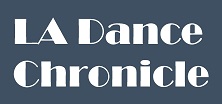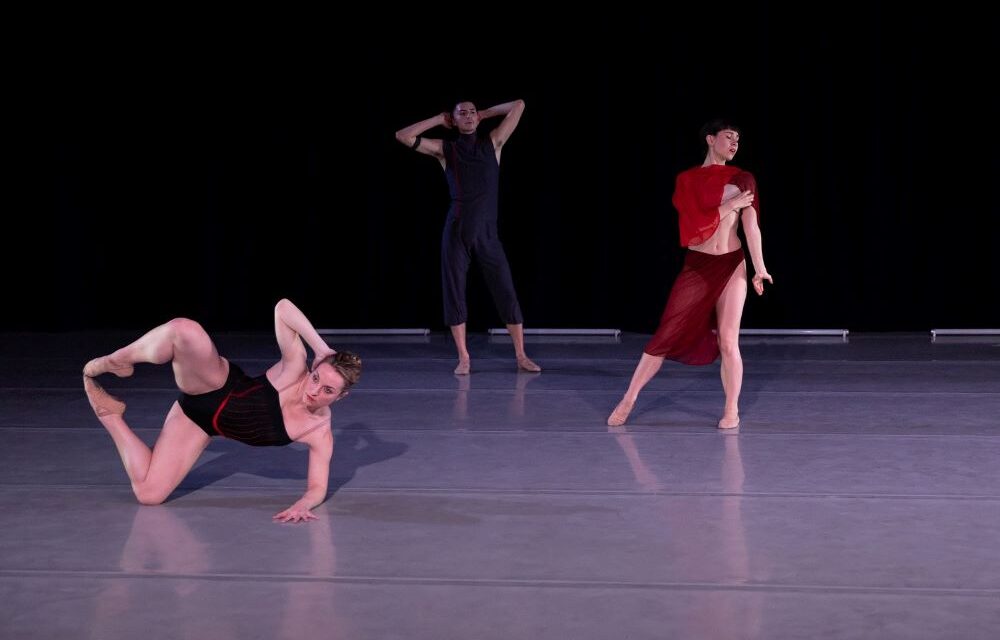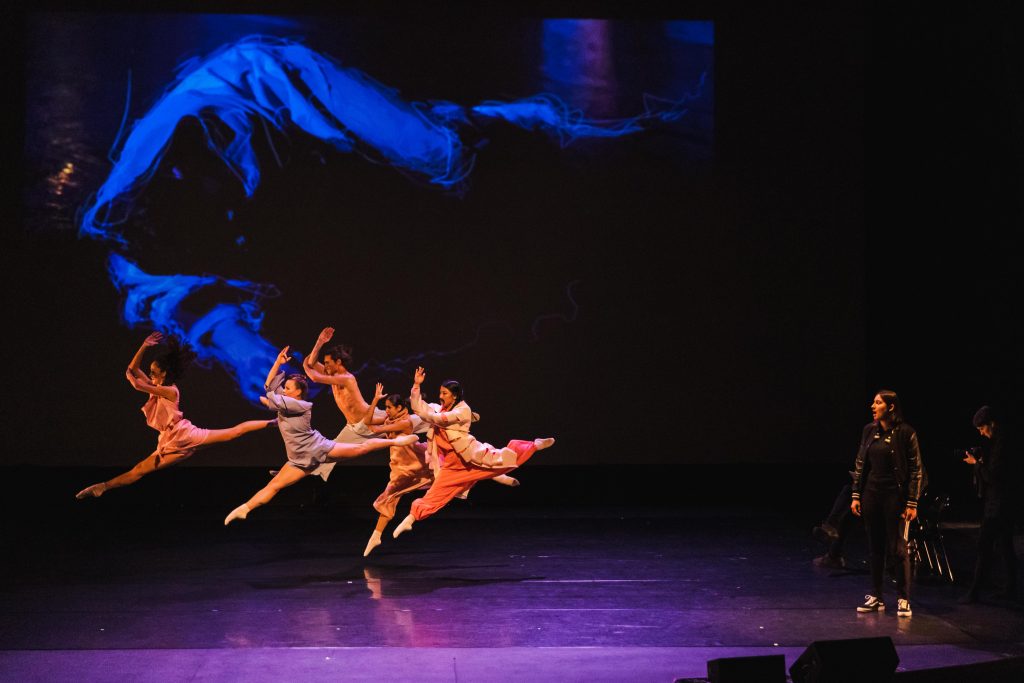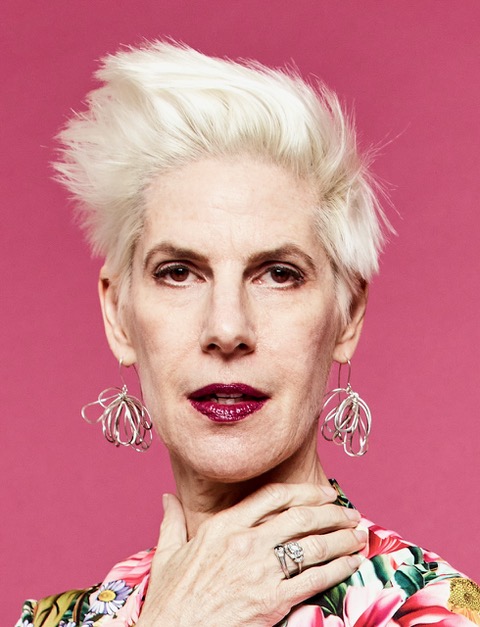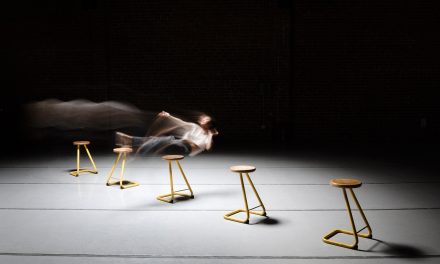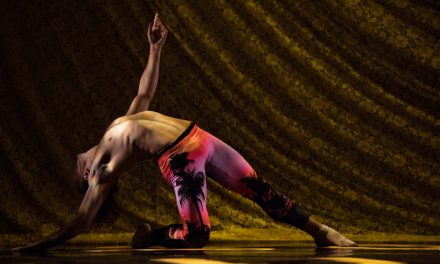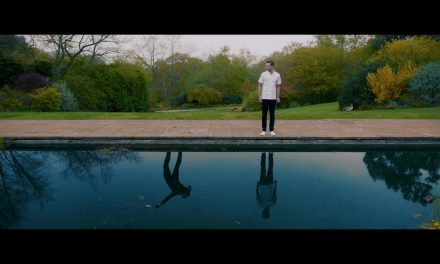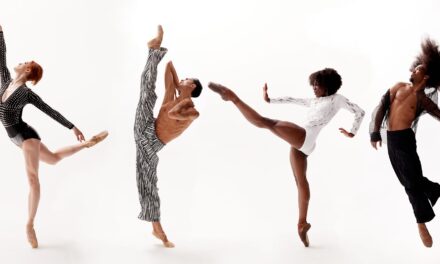Dancers slowly shift their weight with a hand positioned over their forehead. Laurie Sefton’s choreography shines best at points when gestures give shape to movements with modern influences. However, for her, her latest work, “How We Wear Our Art,” is more so a testament to the power of collaboration.
Sefton describes “How We Wear Our Art” as her most collaborative work to date. The work premiering at LA Dance Project Oct. 17-18, 2025 incorporates music by composer Bryan Curt Kostors, an interactive hand and arm sculpture by visual artist Andy Bright, a film by Michael Higgins and costume design by Sophie Isabella Popham. By synthesizing the various art forms into a singular piece, Sefton’s message on the importance of self-expression comes to the surface. The driving force of “How We Wear Our Art” is the art form of tattooing. Throughout the work, Higgins’s film documents tattoo artist Reiley Johnson’s creative process. Tickets are on sale now.
“How We Wear Our Art” choreography by Laurie Sefton – Dancer Rose Lindblom – Photo by Tatiana Wills.
“One of the things that I’ve been noticing over the last 10 years is that there are a lot more movement artists with tattoos,” she said. “Something I’ve been curious about is, ‘What does that tattoo mean to you? Why did you get that tattoo? Why is it there?’”
Sefton’s curiosity brought her to develop a work that interrogates the perceptions we may have of people who express themselves in such public ways. For example, someone with tattoos or piercings may be perceived negatively without others taking the time to understand their whole character. “Making these statements about people by the way they wear their makeup, cut their hair, the clothes they wear and visual body modifications… These are all the ways that we express ourselves, and whether or not we’re conscious of them or very specific about them, they are ways that people judge and inform them about who we are and how we express ourselves.”
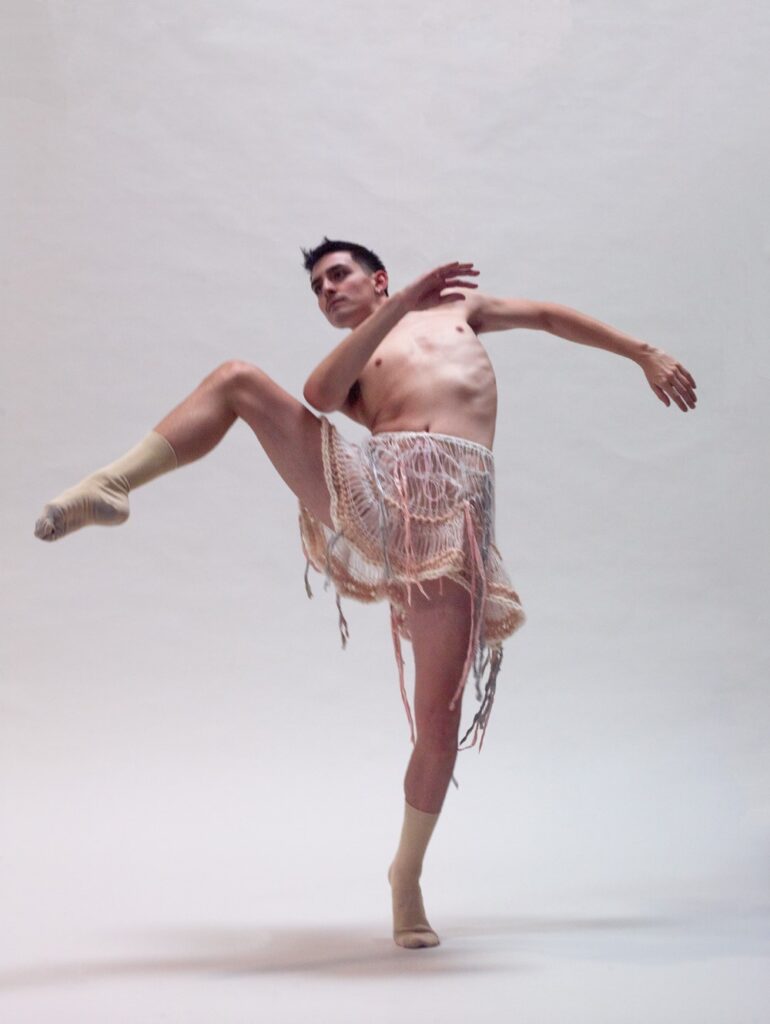
“How We Wear Our Art” choreography by Laurie Sefton – Dancer Zachary Medina – Photo by Tatiana Wills.
Sefton knew she wanted to be a choreographer since she was 16. Although she focused her career on creating movement, she spent a chunk of her dance development performing. She trained in ballet school growing up and studied at UCLA, receiving her undergraduate degree in dance. She studied modern styles like Graham, Horton and Limón.
“I really feel that my work is as a director and choreographer,” she said. “I also feel that needs to be considered in how I make my work more than my previous performance background.”
Her preference to separate her dance creation from her performance background results in a movement language that is diverse in style. She has an insular choreographic process where “the choreography comes from me 99 percent of the time,” she said. However, she does take influence from the art she encounters, like tattooing.
“I try to consume when I’m not choreographing all kinds of different things,” she said. “I’m interested in many different styles and trained in jazz and belly dancing and many different culturally specific types of movement, and I continue to be interested in how culturally diverse movement evolves. So, for myself as a choreographer, I try very hard to break my mold—to not do the same kinds of things.”
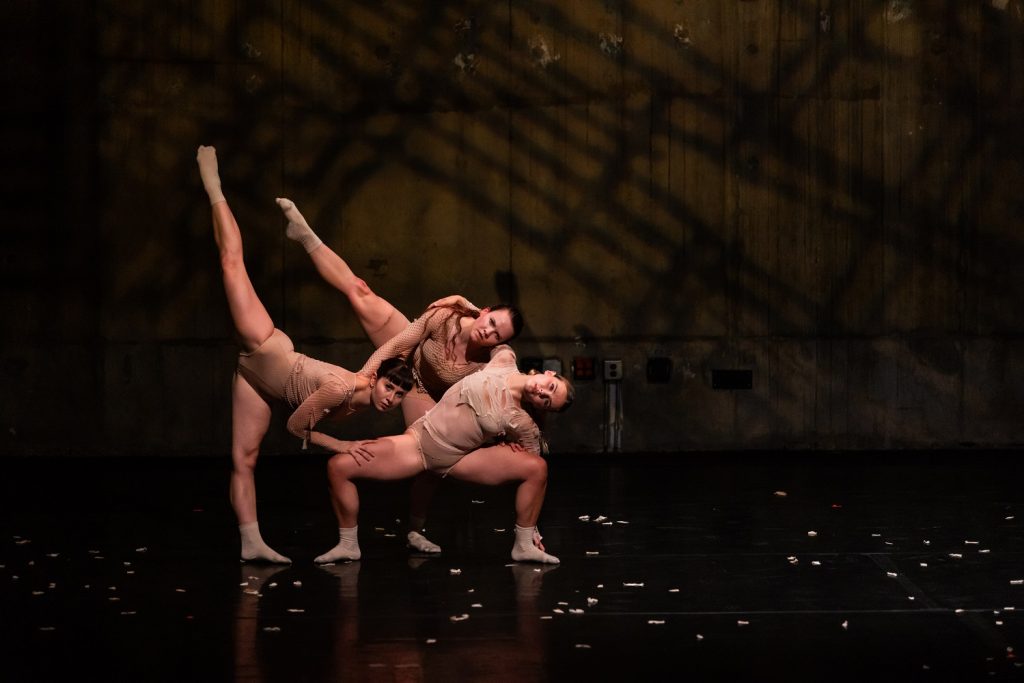
“Women, Fire, and Dangerous Things” – Choreography by Laurie Sefton – Dancers Leah Hamel, Sidney Scully and Karina O’Gara – Photo by Skye Schmidt
Sefton has an ambition to challenge herself and “change things up choreographically,” she said. Throughout the new work, there are moments of seemingly deconstructed house footwork, vogue and whacking. These moments pull the bones of the movement genres out of the grooves, qualities and communities in which they originate and are then adapted into her choreography in the form of subtle echoes of the art form.
“My work is very detailed and almost embellished with a lot of hand movements and hand gestures and complexity in what they’re doing, rhythmically as well as visually, with their bodies,” she said.
One such gesture slipped into a section of slow-tempo balletic movement is a dancer dapping another performer up. The symbol has its roots in Black culture, used during the Vietnam War as a way for Black soldiers to show solidarity. In dance, it has popularly appeared in Kyle Abraham’s choreography that explores themes of Black life and relationships.
“I often put facial expressions or gestures in the hand or face, or specific gestures that happen within the piece,” Sefton said. “Sometimes gestures and facial expressions are things we understand inherently as we walk in our bodies, and are in daily life, and see people move in gestures. We all have ideas about what those things mean… I like to leave it unexplained so that audience members can find their own interpretation about what the work is about.”
During a rehearsal, Sefton described the work as having three acts. However, over the phone, she explains this is not true. She corrects that there are “no defining borders for the choreography in any way.”
“Sometimes I make a work that feels like a narrative in some way, and sometimes I’ll make a work that feels like it’s mostly abstraction, and this work is neither,” she said. “There are some stories that are told in a way.”
She aims to make the work emotional for the audience. In fact, as her choreography evolves, her dedication to the audience remains.
“I make work for audience members,” she said. “I make it for people to find access points. In the past, there was a style of people who make work about themselves, and while everything I make is part of me, because it comes from me, I hope it has more to say and more context than just being about me and who I am.”
Laurie Sefton Create’s How We Wear Our Art run October 17 and 18, 2025 at 8:00 pm at L.A. Dance Project. For more information and to purchase tickets, please visit https://ci.ovationtix.com/35353/production/1189190
Written by Steven Vargas for LA Dance Chronicle.
Featured image: Laurie Sefton Creates – L-R Megan Pulfer, Zachary Medina, Leah Hamel in “More Please“, choreography by Laurie Sefton – Photo by Denise Leitner.
